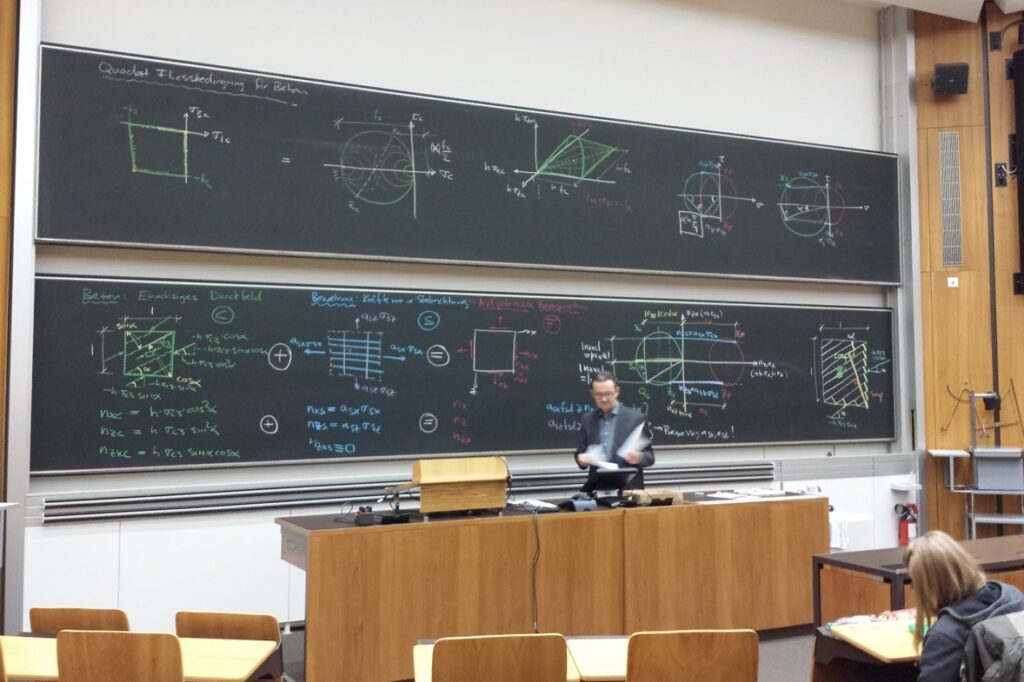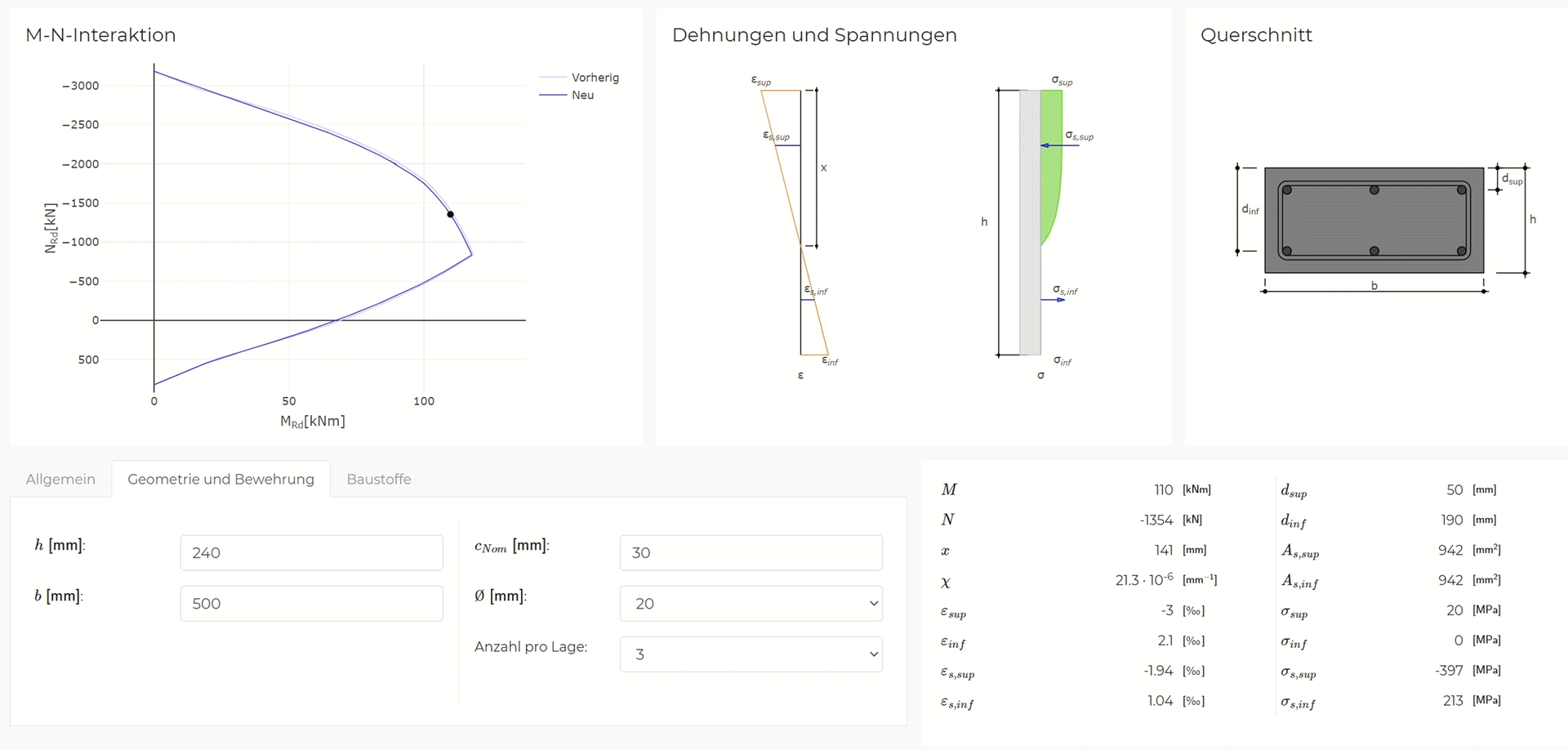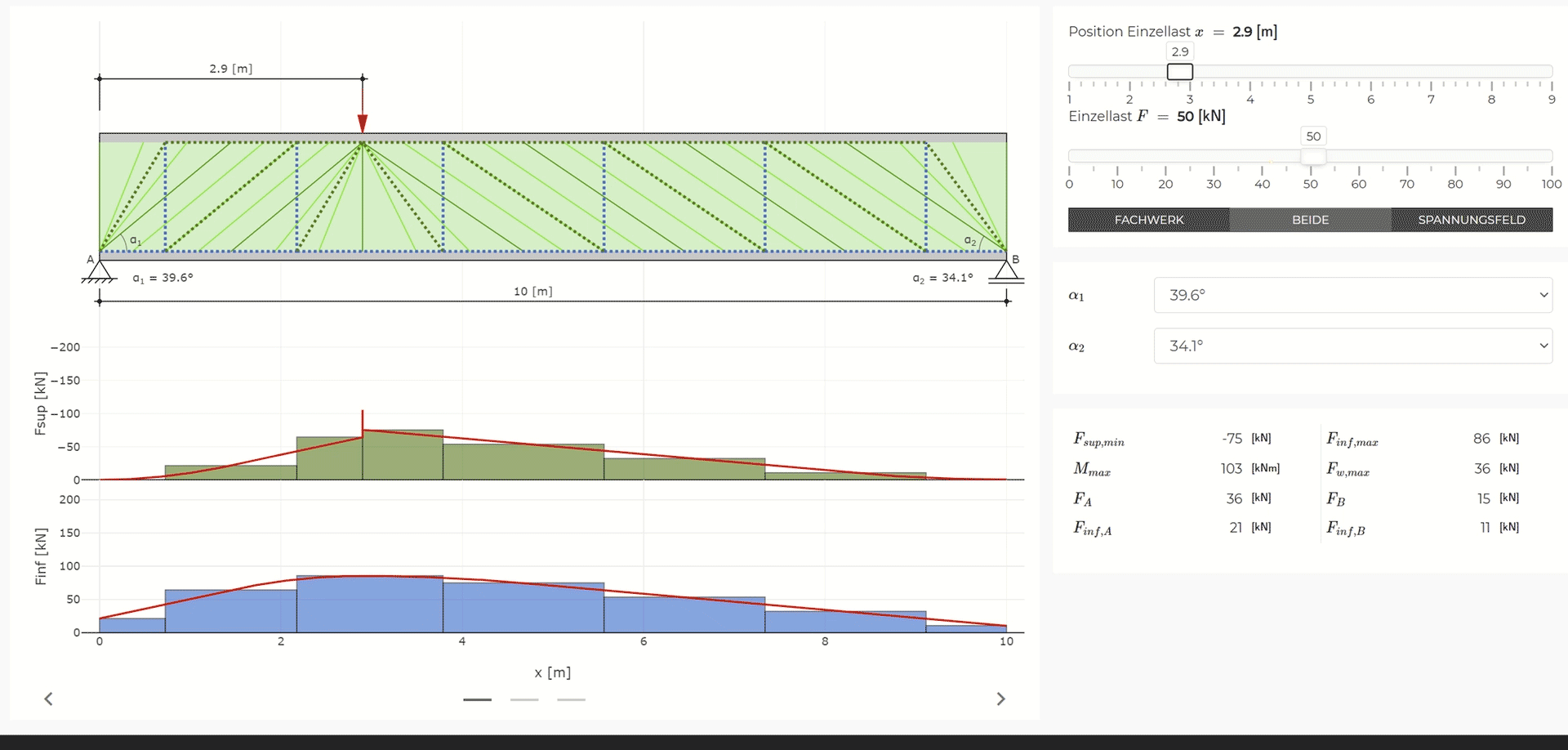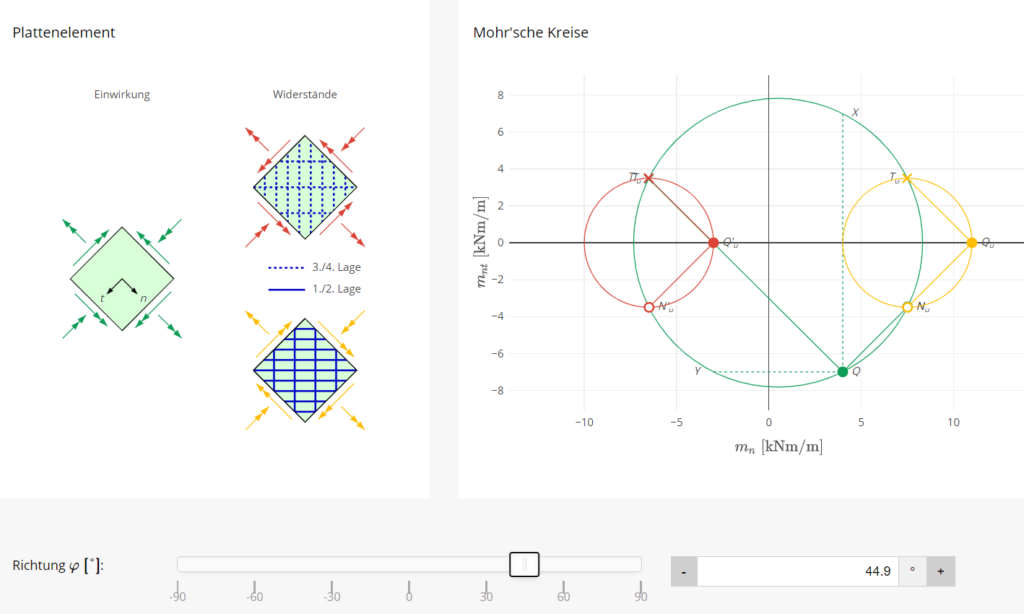Link zur deutschen Version: Lernen zu lernen: Digitale Lernapplikationen in der Stahlbeton-Vorlesung
Just as the basic principle of concrete construction has changed only slightly over the last hundred years, the structural concrete lecture seems to have remained the same since a few decades ago. The curriculum is based on a consistent application of equilibrium and a strong focus on mechanically consistent models, representing a tradition at ETH that Prof. Thürlimann and Prof. Marti had particularly shaped. This not only strengthens the competence in structural concrete, but also forms a good foundation for the education of young civil engineers in general. The awarding of the Golden Owl to Prof. Kaufmann for exceptional teaching by the students’ organisation of ETH also shows that our teaching is perceived as competent and authentic. Although we are convinced of our lectures’ content, we still see some potential for improvement – especially concerning the teaching methods and applied tools.
Digitalisation in teaching
Concrete has undergone some adjustments in its formula over time, and also our lectures have been adapted to meet today’s standards. Instead of a handwritten autography, the slides are now digital. Instead of working exclusively on the blackboard, the notes are now partly written on the iPad and projected. But is this mild digitalisation an innovation in teaching? The classical way of frontal lecturing seems to have no alternative when it comes to imparting knowledge. However, the wealth of information during a lecture is immense, and students do not always manage to absorb and directly process everything. The students often only start dealing with the subject matter much later, either when they are solving the colloquia and exercises or shortly before the exam, whose preparation consists of internalising “recipes” for certain types of tasks. Unfortunately, the understanding of the subject often becomes secondary. Of course, we as lecturers see ourselves as responsible here. So how can we improve teaching to give students easier access to the rather dry analytical methods?

Innovedum – «Advancing education at ETH»
“Innovedum” is a brand established by Rector Prof. Springman, which promotes “initiatives that contribute to the development of quality education at ETH in the long term”. This has already resulted in numerous innovative teaching and learning projects across various disciplines and with different approaches such as hands-on workshops or gamification of teaching content. So we also asked ourselves how new teaching elements could be introduced to foster critical thinking and self-initiative among students. In the structural concrete lecture, we mainly deal with the load-bearing behaviour of structures using limit states (e.g. at failure load). Although these rely on proper and mechanically consistent derivations, they are limited to isolated conditions with predefined parameters, making it difficult to fully grasp the non-linear behaviour of structural concrete. The new teaching material should offer both a dynamic representation of the results and the possibility to change parameters actively. This idea sparked the development of digital learning applications for the structural concrete lecture as part of a teaching project financed by the Innovedum Fund.
Virtual experiments and structural analysis
The majority of applications consists of virtual experiments, where elements and structures can be investigated under different loading types. There are examples where the current stress state under a given load is considered, but also applications where the load-deformation behaviour with increasing load can be followed. It was vital for us that the students can change the input parameters as freely as possible. The continuous tracking of the output parameters ensures a better understanding of the transitions between the analytically derived limit states. A good example is the interaction of bending and normal force in reinforced concrete columns. In the lecture, we learn how to determine the stress state in the reinforced concrete cross-section based on the strain state and the material laws. We can thus construct a linearised envelope for the ultimate load in the M–N space with just a few characteristic pairs of bending moment and normal force. The change in stress and strain states between these characteristic points appears relatively complex due to the non-linear relationships. In terms of geometry, this corresponds only to a rotation of the strain plane, which can be nicely shown in a dynamic illustration. By changing the acting normal force using a slider, one can observe the changing strains and stresses at one’s own pace. For example, it is easy to see that at the point of maximum bending moment, the governing strain no longer occurs in the reinforcing steel but in the concrete when the compressive normal force is further increased.

Not only the load can be changed, but also the geometry and reinforcement, which – for instance – can show that a doubling of the reinforcement content does not lead to a doubling of the bending resistance for a given normal force. These findings may seem trivial. However, we are convinced that even such simple animations and the small eureka moments can contribute considerably to the understanding and foster the students’ curiosity for the effective behaviour of structural concrete, which goes beyond the calculation of limit states with the help of rigid formulas.

The applications are also helpful for problems that we solve graphically but are relatively time-consuming to work out by hand, especially if multiple states have to be considered. A good example is the strut-and-tie model, where the moving point load across the beam creates different inclinations of the stress fields and their influence on the internal load-bearing mechanism can be investigated. The potential of these simple visualisations can be seen in numerous other applications such as Mohr’s circles, yield conditions, three-dimensional fracture mechanisms of slabs and many more.

The digital learning applications now cover almost all the topics from the curriculum and are thus a constant companion to the course. They offer various advantages: In the lecture, they can illustrate newly introduced topics, or they allow more efficient parameter studies in the exercises. Eventually, our ultimate goal would be for students to explore the apps independently of given assignments since the acquired competencies are not only applicable to structural concrete but, in principle, to all types of building materials and structures. Not all applications are yet documented in detail about the theoretical background. However, we deem this necessary to avoid an application as a pure black box, and we will continue to further expand this information.

The digital apps have also been supplemented with some physical models. For example, we use a pre-stressed beam that consists of foam segments. The phenomenon of pre-stressing and decompression of the cross-sections can be shown in either the physical model or the simulation. We would also like to compare actual tests from our experimental research with the simulations in the future. After all, even these virtual experiments – albeit dynamic and animated – remain an analytical model. Only the observation of actually loaded elements and structures may create a better understanding of the real-life behaviour compared to the analytically derived failure states.

Challenges in development and implementation
The development of the web applications and their implementation in the existing curriculum presented a great challenge. Our everyday life is already strongly influenced by digital apps of various kinds, and especially the digital native generation has high demands on user experience. In addition to the engineering competence, the design of the applications and the web platform was one of the governing success factors. The apps should have a recognisable appearance and should be intuitive in use. The platform should also allow easy access so that the future generation of assistants can continuously develop the applications. Therefore, working out the technical basics took some time, and several iterations were necessary before we could even program the first app.
We wanted the web applications to be perceived as an integral part of the teaching. We could not simply introduce them as an additional element in an already highly dense course. According to a student survey, the applications were much appreciated as a presentation tool during lectures, and they were also actively used in exam preparation. However, there seemed to be little engagement with them during the semester due to a lack of time. This encouraged us to push for further adaptations in the colloquia and exercises to promote the applications in “everyday” use.
Conclusion and further future possibilities
The development and introduction of digital learning applications opened up broader possibilities for us to develop our teaching content in lectures and exercises, where we especially see advantages in the dynamic visual interaction with the students. This is only a first step in the digitalisation of teaching content. There are already many more ideas for new innovative teaching methods, such as augmented reality (mixing real environment with digital content) in bridge design.
However, we are still convinced that the foundation of our teaching approach in structural concrete is based on the rigorous application of equilibrium and mechanically consistent models. For this, we still see paper and pencil as the best tools. Nevertheless, we would like to invite you to explore the applications yourself. There is always something new to discover even in “Structural Concrete 101” – be it during studies, in practice or in research.
Acknowledgements
This teaching project was supported by the Innovedum Fund of ETH Zurich. Many thanks go to all those involved in the development and implementation of the applications.
Project lead: Prof. Dr. Walter Kaufmann, Minu Lee
Web design and development: Sebastian Wehrli
Applications: Lukas Gebhard, Nicola Gehri, Nathalie Reckinger
Revision: Fabian Morger, Andreas Näsbom
Links
Collection of all digital applications for structural concrete:
https://concrete.ethz.ch/applikationen/
Learning and Teaching Fair:
https://learning-teaching-fair.ethz.ch/project/visual-interactive-learning-applications/?view=grid
Innovedum project database:
https://ethz.ch/en/die-eth-zuerich/lehre/innovedum/projektdatenbank.html
Minu Lee

